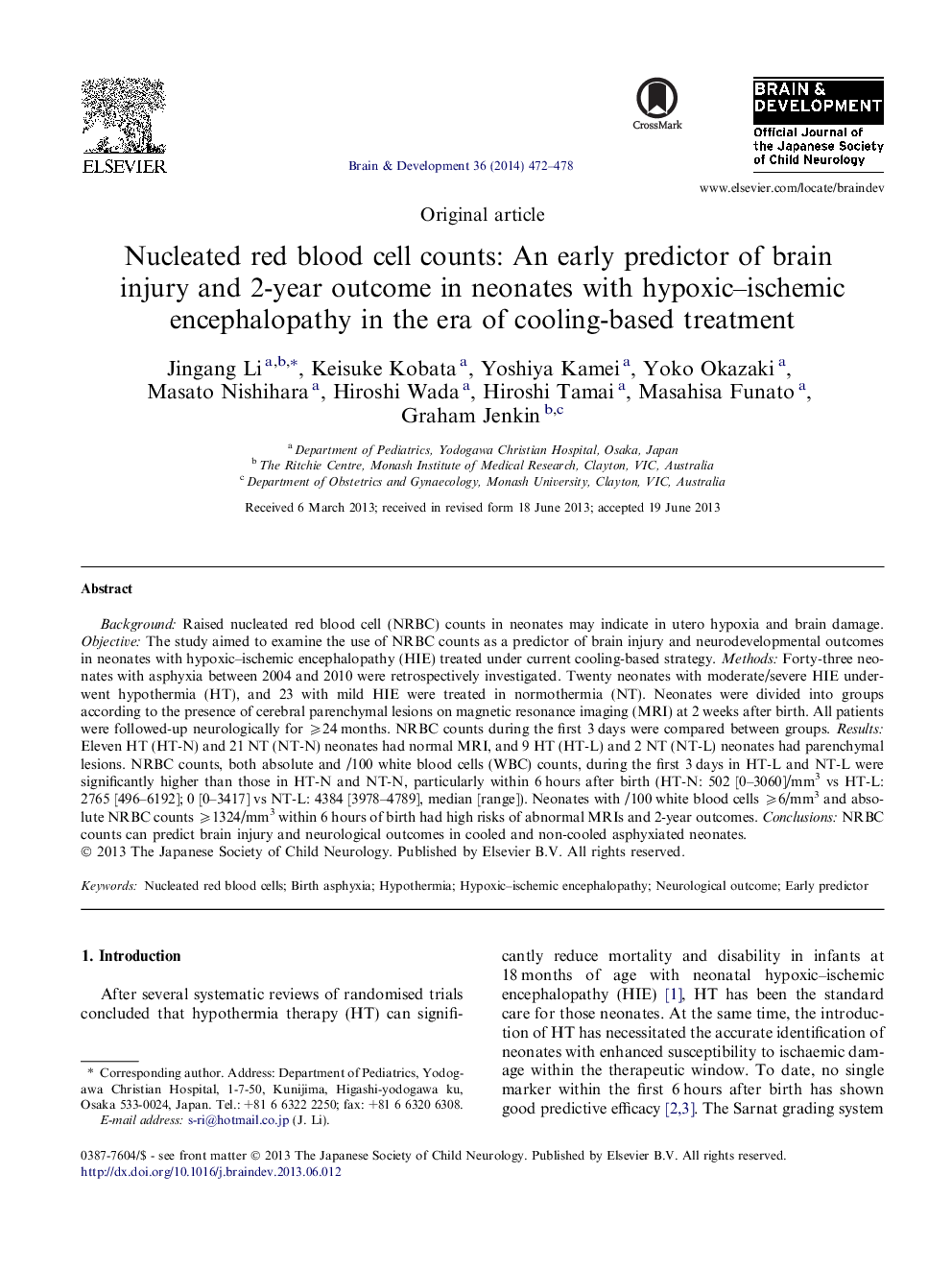| کد مقاله | کد نشریه | سال انتشار | مقاله انگلیسی | نسخه تمام متن |
|---|---|---|---|---|
| 3036953 | 1184392 | 2014 | 7 صفحه PDF | دانلود رایگان |
Background: Raised nucleated red blood cell (NRBC) counts in neonates may indicate in utero hypoxia and brain damage. Objective: The study aimed to examine the use of NRBC counts as a predictor of brain injury and neurodevelopmental outcomes in neonates with hypoxic–ischemic encephalopathy (HIE) treated under current cooling-based strategy. Methods: Forty-three neonates with asphyxia between 2004 and 2010 were retrospectively investigated. Twenty neonates with moderate/severe HIE underwent hypothermia (HT), and 23 with mild HIE were treated in normothermia (NT). Neonates were divided into groups according to the presence of cerebral parenchymal lesions on magnetic resonance imaging (MRI) at 2 weeks after birth. All patients were followed-up neurologically for ⩾24 months. NRBC counts during the first 3 days were compared between groups. Results: Eleven HT (HT-N) and 21 NT (NT-N) neonates had normal MRI, and 9 HT (HT-L) and 2 NT (NT-L) neonates had parenchymal lesions. NRBC counts, both absolute and /100 white blood cells (WBC) counts, during the first 3 days in HT-L and NT-L were significantly higher than those in HT-N and NT-N, particularly within 6 hours after birth (HT-N: 502 [0–3060]/mm3 vs HT-L: 2765 [496–6192]; 0 [0–3417] vs NT-L: 4384 [3978–4789], median [range]). Neonates with /100 white blood cells ⩾6/mm3 and absolute NRBC counts ⩾1324/mm3 within 6 hours of birth had high risks of abnormal MRIs and 2-year outcomes. Conclusions: NRBC counts can predict brain injury and neurological outcomes in cooled and non-cooled asphyxiated neonates.
Journal: Brain and Development - Volume 36, Issue 6, June 2014, Pages 472–478
